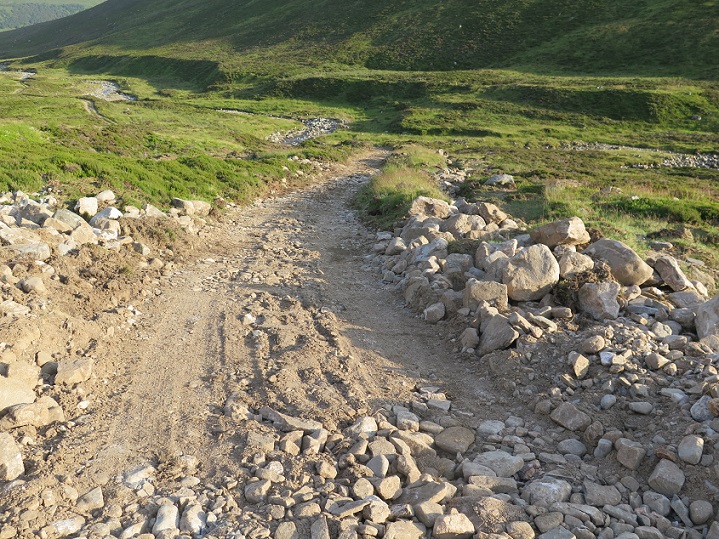
A week after walking up by the Allt Fionndrigh off Glen Banchor to look at the extensive landslips there (see here), Dave Morris returned to look at the impacts red deer are having higher up the hill. He was surprised to find that the track, which had been completely covered by debris washed down by the storm, had been repaired. Not the best of jobs, but it is amazing what diggers can do in a short time.
It is interesting too how rich landowners, like Abdul Majid Jafar, the Chief Executive of Crescent Petroleum and apparent owner of the Glenbanchor Estate (see here), fork out money when they believe its in their interests to do so (the moor above the track is being developed for grouse shooting). What, if anything, Mr Jafar has contributed to the conservation initiatives that are taking place on his land in Glen Banchor, not far below the landslips, is another question.
Peatland Restoration in Glen Banchor?
Last year I came across work on peat bogs on the floor of Glen Banchor on my return from a visit to look at what restoration work had taken place on the unlawful track up Carn Leth Choin (see here). Crossing the moor east of Dalballoch, there were signs of recent and extensive work by diggers:
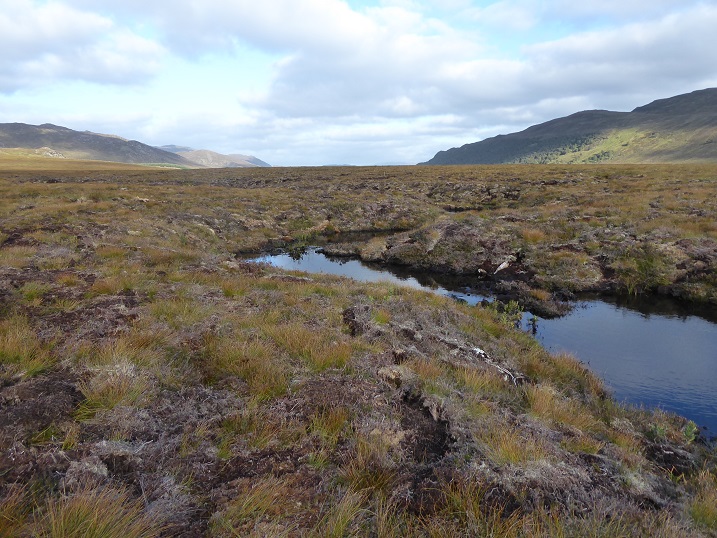
Although NatureScot’s list of Peatland Action restoration sites funded by the Scottish Government includes three in Glen Balloch (see here), this site does not appear to be included. It is possible therefore, that this was an initiative paid for by the Glenbanchor estate. If so, that would be unusual as my understanding is only a handful of estates in Scotland have contributed towards the financial cost of restoring peatbogs, Wildland Ltd, who manage Glenfeshie, being the most important exception.
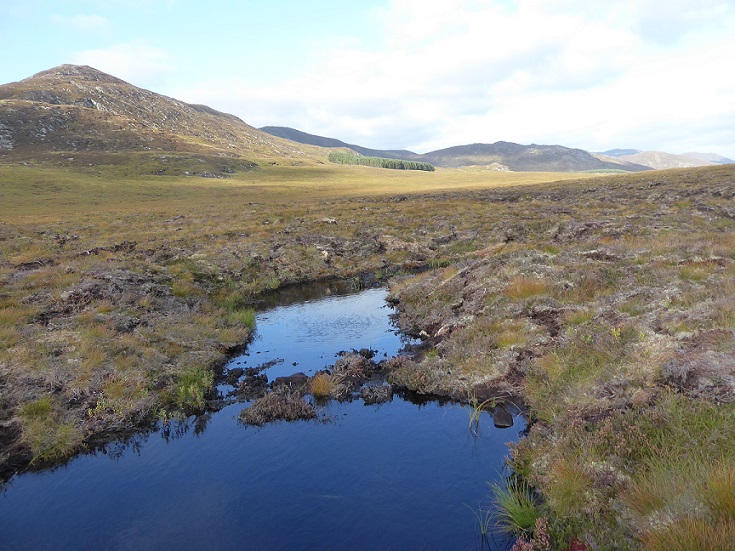
Unfortunately, I don’t have photos to compare how the bog – which was formerly used for grazing by people living in the abandoned settlements in Glen Banchor – looked prior to this work. Some of the work, however, appeared to me highly questionable in conservation terms:
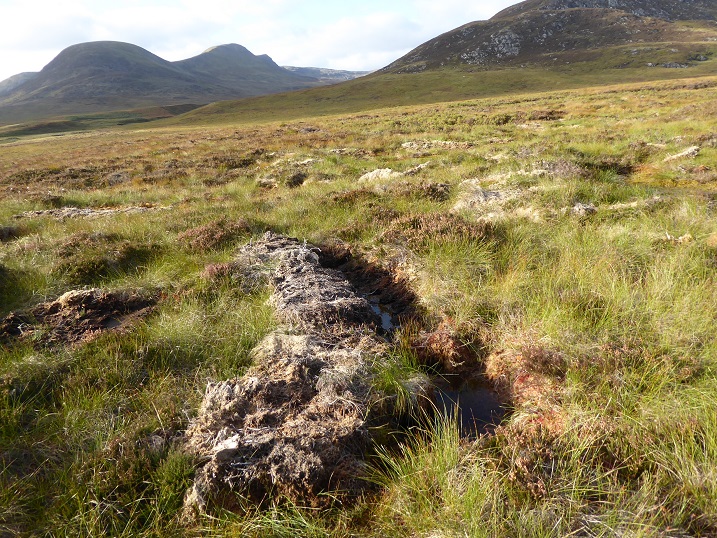
Why dig trenches in the sphagnum in an apparent attempt to create pools? The area of bog around the trench doesn’t appear damaged, with peat exposed to the open air and leaching carbon into the atmosphere. This, and a number of other trenches, appear to me examples of nature gardening, attempts to make the bog fit someone’s conception of what a peat bogs should look like. Humans playing god with nature.
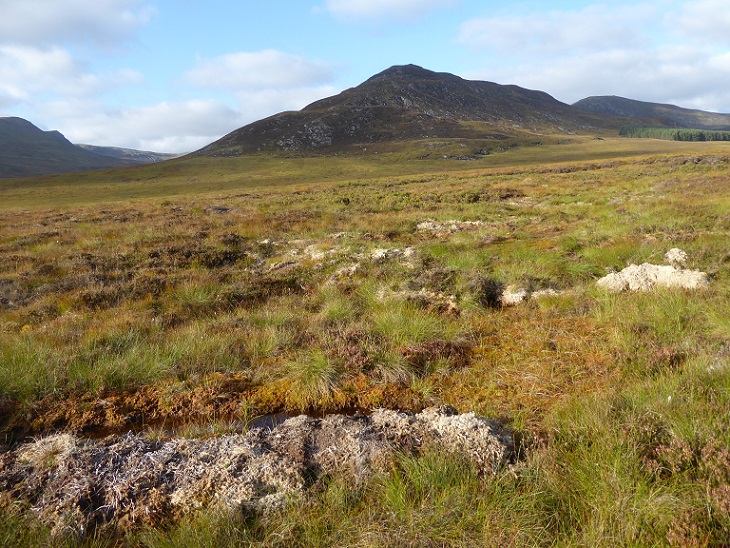
But maybe this work wasn’t intended as peatbog restoration at all but was undertaken for another purpose……….such as creating new habitat for game birds which the Glenbanchor estate can then shoot? The trenches, for example, may have been dug to attract snipe (see here).
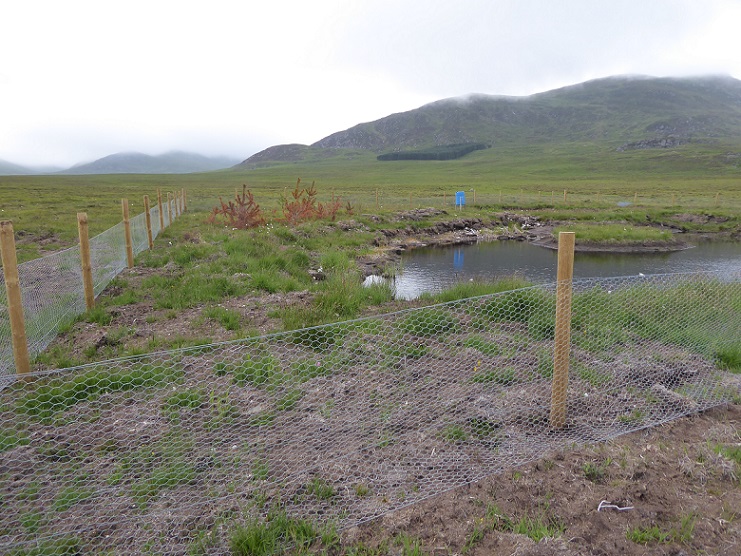
That this might be the case is suggested by the large new pool that has been created on the edge of the bog. The primary use of part of this bog now appears to be game bird farming, not carbon sequestration or flood prevention. How can NatureScot justify paying out shedloads of public money to restore peat bog higher up in Glen Balloch, while all around allowing the estate to continue with practices that damage the peat bogs it claims to be trying to protect?
I will endeavour to clarify with NatureScot exactly what is going on here but for me it raises wider questions about the Peatland Action programme and whether the Scottish Government has been sensible to commit a further £250m over the next ten years without actually tackling the power of landowners? It should be obvious there is no point in spending public money to pay for a conservation project on one part of an estate, if the landowner can continue to destroy the natural environment on another.
The Glen Banchor woodland planting scheme
There is an even clearer demonstration of this failure to take a joined up approach to conservation along the banks of the River Calder which flow through Glen Banchor. I first became aware of this when, after stumbling through the “restored” peat bog and its artificial pools, I spotted a digger:
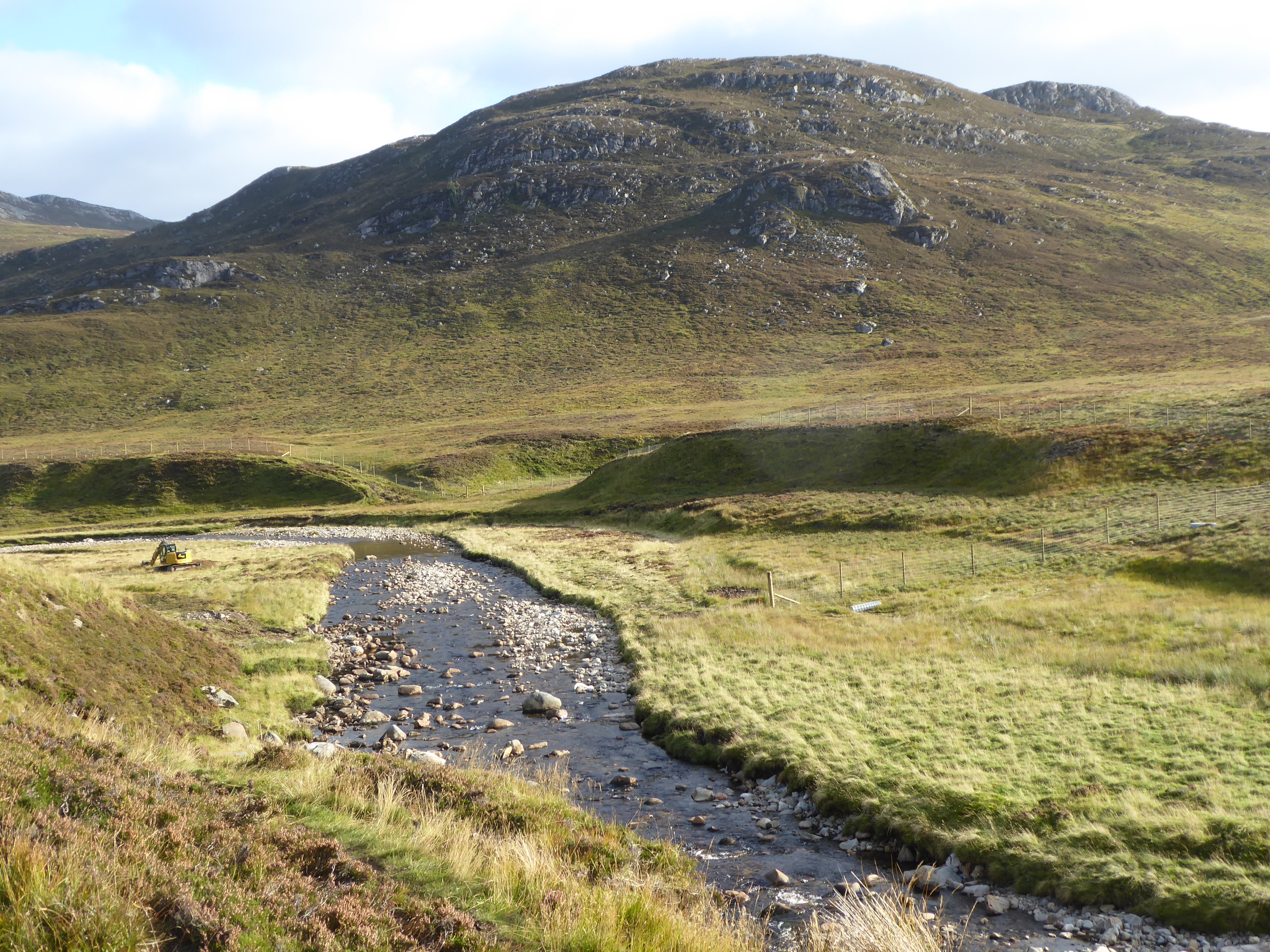
The work turned out to be related to the creation of three areas of native woodland along the River Calder. When I returned earlier this month there was a new sign which helpfully explains what it is all about:
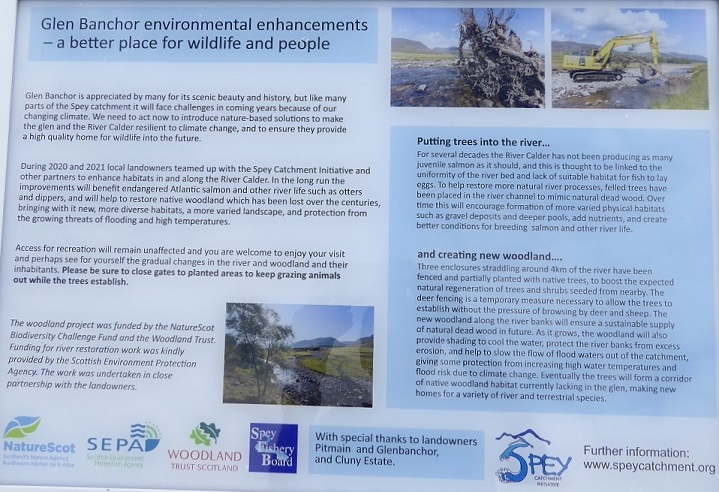
Native woodland and upland river restoration along with flood prevention ticks a lot of conservation boxes. What could be better?
The sign also says the woodland project has been funded by NatureScot and Woodland Trust Scotland, while the river restoration work was funded by SEPA. Presumably the special thanks given to the landowners is for allowing their land to be used for conservation purposes. There is no mention of them having contributed a penny to these projects. But perhaps the sign is misleading and I do them a disservice?
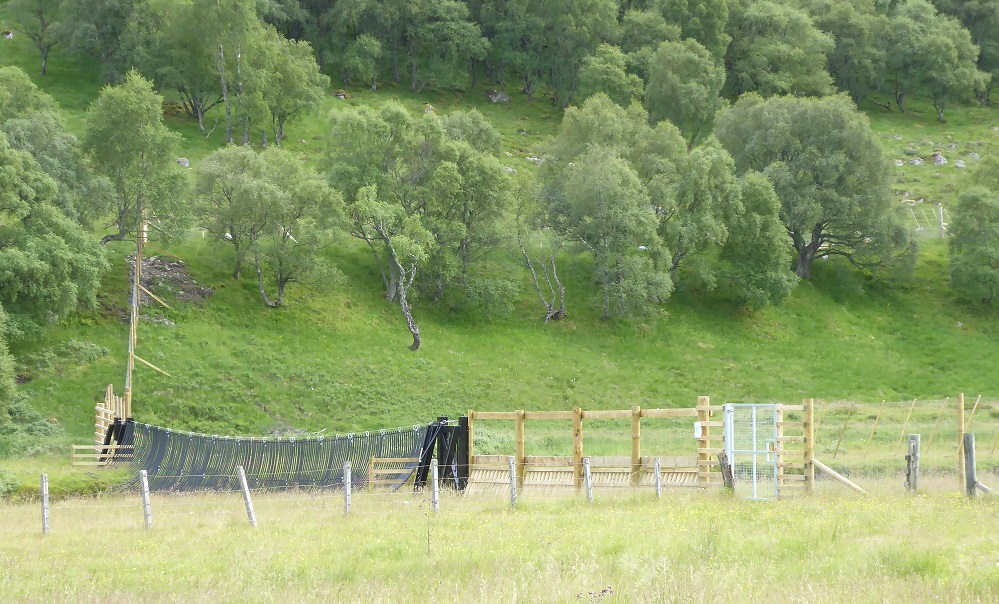
With grazing animals fenced out, the birch wood should be able to start regenerating naturally, although the woodland project includes “some planting”. We shouldn’t, however, need to fence off areas to allow woodland to regenerate naturally. NatureScot should know only too well from their land at Inshriach on the edge of Glen Feshie:
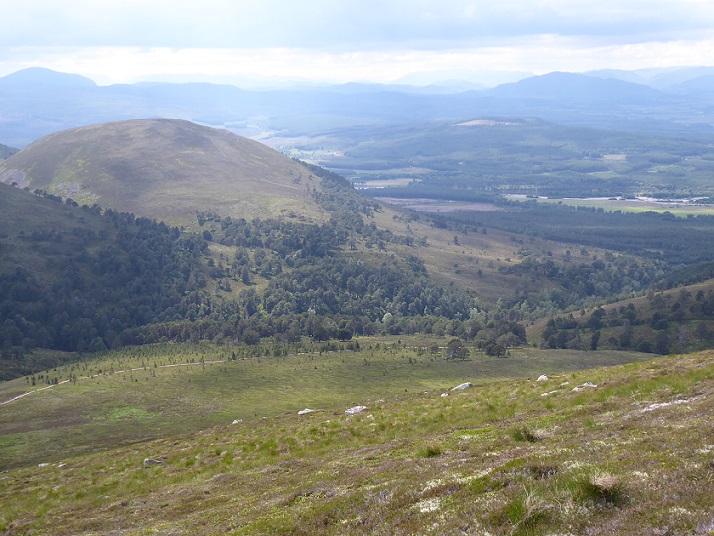
The real conservation problem in Glen Banchor is that natural regeneration of woodland cannot happen because of the large number of grazing animals. But rather than tackle this, which is almost entirely the result of how this sporting estate manage their land, NatureScot and the Woodland Trust have chosen to pay for fencing to keep the animals out. While the exclosures are on a larger scale, this is just as tokenistic and misguided as the postage stamp planting that was funded with public money on Deeside (see here).
Rather than using their powers under Section 8 of the Deer Act to force the Glenbanchor Estate to reduce the very high numbers of red deer in the area (the main cause of the landslips, peat bog erosion and ecosystem destruction in the glen), NatureScot have persuaded the estate to set aside a small part of their land for conservation. In my view this is totally misguided. What is the point, for example, in SEPA paying for dead trees to be placed across the river in an attempt to reduce water flow if, higher up, water continues to pour ever more quickly off the hill?.
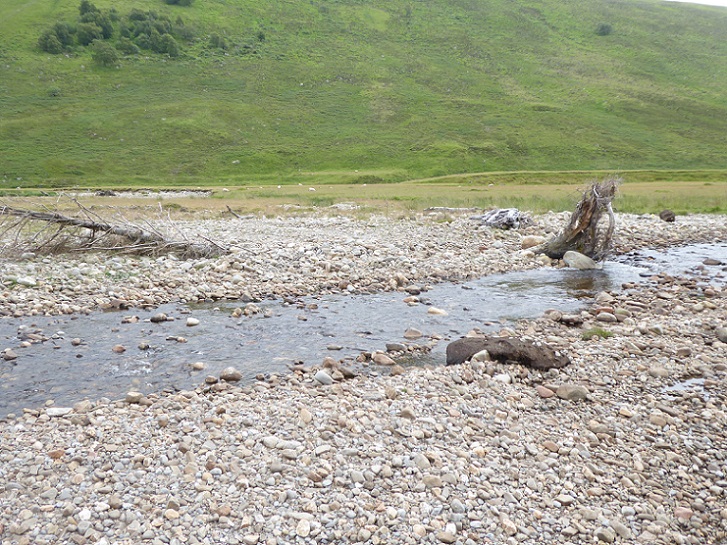
Worse, these conservation projects are using public money to pay for actions that promote the use of this land for sporting purposes. Part of the idea of the logs is to trap silt providing areas for salmon to spawn. With the river bed destroyed through a long history of land mismanagement, the agents and factor for the Glenbanchor Estate must have been delighted when NatureScot and SEPA offered to restore the fishing for them! One wonders how much the sporting value of the estate will increase as a result?
After that windfall, contributing £1000 to Badenoch Shinty Memories (see here) in April must have seemed a small price to pay for keeping the local community on-side. Due to the geography of Newtonmore, which is located well above the banks of the River Calder, it is local communities lower down the Spey catchment that are likely to suffer most from the failure of NatureScot to address the real causes of the flood problems in Glen Banchor.
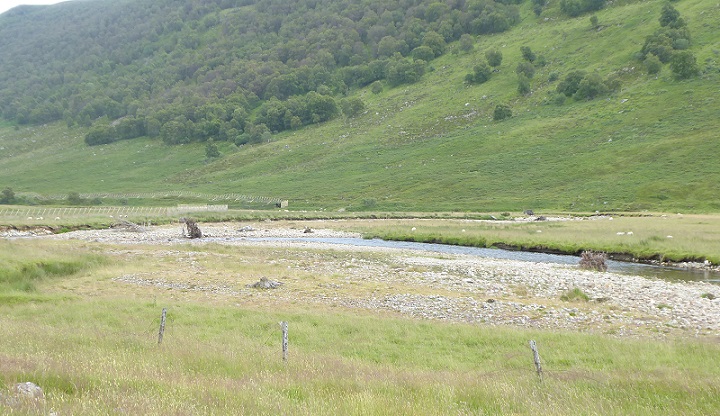
While sections of the river bank are now protected from grazing and the new woodland should in time help retain water on parts of the flood plain, outside the exclosures there were sheep everywhere. Indeed, unless Glenbanchor has agreed to reduce the size of its sheep flocks, their impact the unfenced sections of river may get worse, not better.
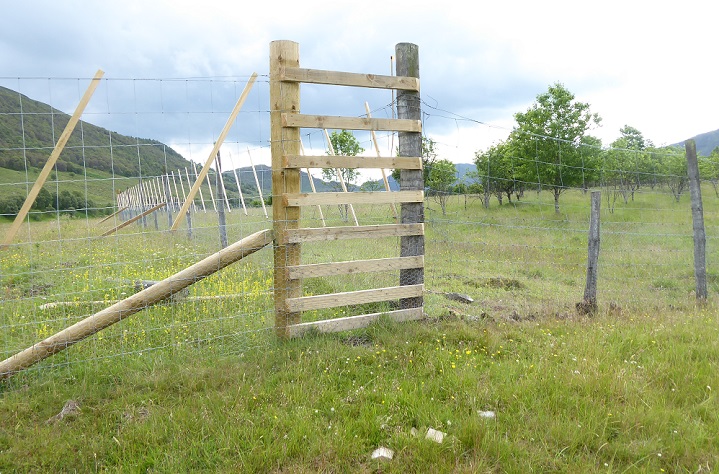
The Glenbanchor “environmental enhancements” sign describes the fencing as “a temporary measure” to allow woodland to get established. There are several plantations near to the new ones which provide evidence of what is likely to happen in the medium term if the numbers of grazing animals are not reduced:
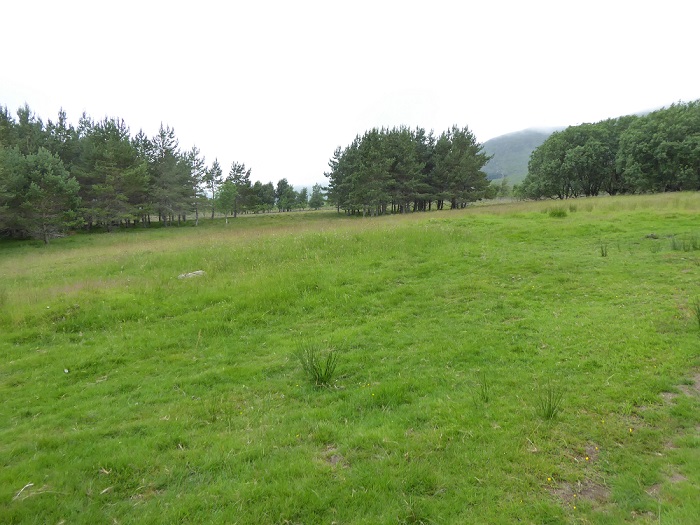
Once grazing resumes in the plantation and the woodland regeneration/expansion will stop. All the new native woodland planting will then do is provide a refuge and food source for sheep in summer and red deer in winter. This will actually make it easier for the Glenbanchor Estate to maintain numbers of grazing animals at their current high levels and for the environmental destruction this is causing around Glen Banchor to continue. The new fenced blocks of woodland therefore serve to promote the estate’s farming and sporting interests at public expense.
Just why the Woodland Trust agreed to participate in this conservation travesty is unclear.
What needs to happen?
If the new Minister responsible for National Parks, Mairi McAllan, really wants to tackle the climate and environmental crises, the first thing she needs to do is ensure that all the public money being spent on peatbog restoration and woodland planting is well spent. That should mean NO landowner in our National Parks should receive a penny of public funding unless they promote conservation objectives across their entire land-holding. There is no point in paying for the restoration of peat bogs, only for the restoration work to be trampled to bits, or in planting trees that then get nibbled back and are never able to reproduce because their offspring are beheaded as soon as their lead shoots peak above the surrounding vegetation.
I challenge the Cairngorms National Park Authority, which has a statutory duty to promote conservation and which for whatever reason does not appear associated with the Glen Banchor greenwash, to make that case.

Well observed Nick and clearly public money is being misused and that the public face put on by the estate has a darker side. The board of CNP are a pathetic bunch of toothless tigers . I am still waiting for the track behind Clova Hotel in Glen Clova to be removed as per instruction . As far as I am aware nothing has been done . Our politicians are letting us down .
Some very interesting observations, Nick, which I’m sure are being repeated in numerous areas and estates all over the Highlands. It seems that NatureScot, SEPA and CNPA are engaging in private conversations with estate landowners on conservation projects. The drive for these publicly funded bodies seems to be – we’ve got money to spend (they forget it is public money), let’s give our politicians some good news stories to prise more money out of them – doesn’t matter if the projects are ‘greenwash’ it’s just got to look good on the surface.
Environmentalists, ecologists and knowledgeable people who see the folly of these projects are kept at bay. If the new Minister responsible for National Parks wants to make her mark, she needs to engage with all these people who are being shut out of the conversation on the future of our wildlands, listen to the criticisms and win a consensus on the way forward in regeneration of these areas and estates. It is clear that our public bodies, who should know better, are just trying to put down all criticism of their actions. I’m sure there are many very experienced and competent people in the ‘grass-roots’ of these bodies. The problem is with the leadership……or lack of it!